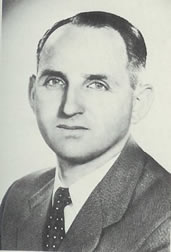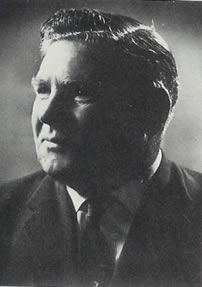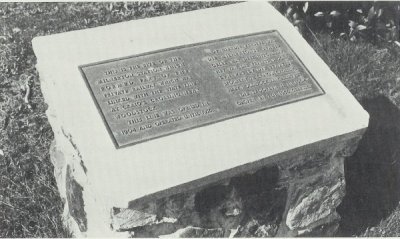|
||
|
Chapter 21 - Table View and other Expansion
At this stage the entire prospects of Milnerton were radically changed through two developments: the prospects of a major expansion of boundaries, and the opening of a distinctive industrial area. The extension Programme had its origins in the establishment, already referred to, of Porterfield Estates Limited, under the auspices of the late Saul Garlick - no relation of the department store family. With its wide variety of interests, this enterprise would today be called a conglomerate, its activities ranging from the operation of bottle stores to land development. Unfortunately Porterfield Estates found themselves in financial difficulties, and were placed in liquidation. On June 22, 1959, Milnerton Estates Limited learnt that Table View Township, originally registered on October 3, 1942, together with its several extensions, covering altogether 1 860 morgen, was shortly to be disposed of. Since this directly adjoined its own property, Milnerton Estates felt a keen interest in the outcome of the auction sale on August 5. Such was the slump in values that one block of 350 morgen was provisionally disposed of to them for £17 500, a figure which, owing to the receipt of a rival offer from another source, was then raised to £22 500, duly accepted by the liquidators. The possibility of such an extension of its boundaries had already been closely discussed in the Planning Committee, and as early as November 4, 1958, the Administrator had been informed: "The Council considers that, as and when the time is opportune, Table View Township should also be incorporated in Milnerton". The management of the Company were still confronted with problems, to which reference was made by its new Chairman, C. A. Raats, on June 27, 1960. Having pointed out that the prime cost of the land was a very satisfactory figure of under £15 per morgen, and that even survey fees and other incidentals raised it only to £16 13s. per morgen, Mr. Raats explained: "This was sub-divided by Porterfield Estates Limited some years ago and the sub-division into four residential townships was approved by the authorities. But none of these sub-divisions has been registered. There is a claim for a considerable amount by Mr. H. M. Shaw, Surveyor, against Porterfield Estates Limited (in Liquidation) for preliminary work done by him to layout these townships. . . it is regarded as advantageous to our Company to adopt these sub-divisions rather than risk fresh ones, bearing in mind the onerous requirements under the Township Ordinance . . .". All this brought home to the Municipality the immediate need for including Table View within its boundaries and urgent approaches were made in 1962 to Dr. Nico Malan, the Cape Administrator. His first response was unfavourable.
Frustration and indignation were mingled in the reply by the Town Council, which recorded its "huge sense of shock and disappointment at the contents of his letter" . . . They reminded His Honour how, at a meeting held not long previously: "You were satisfied that Milnerton cannot remain confined to the narrow strip between Koeberg Road and. the sea, and that its boundaries must be extended in an easterly direction to the Malmesbury National Road. "Having regard to the fact that an oil refinery, if established, in the position presently under consideration, will affect Milnerton more than any other area, and that most of its services will have to be obtained from Milnerton, the Council also finds it difficult to appreciate why the Refinery should be incorporated in Cape Town merely because it should happen to abut the Cape Town Municipal Boundary. It would be appreciated if Your Honour could see his way clear to clarifying this aspect of the matter as well. . ." Then followed an analysis of the financial implications of the refusal and its effect on any future ideas of Town Planning. The letter closed with an urgent plea for another discussion. Early in October 1962 a meeting of Ratepayers took place in Milnerton, in order to convey the facts to its members and to give them an opportunity of also putting their views. "I am convinced," said Mr. P. J. McCarthy, the Mayor, "that this is very necessary, because there has been a lot of loose talk on the subject, and quite a number of people appear to have a completely wrong idea as to the state of affairs. . ." From this meeting it emerged that there was a section of the local population which disagreed with the idea of incorporating Table View into Milnerton, "until such time as the amalgamation of Milnerton with Cape Town has been finalised". One of the principal protagonists proved to be Professor W. H. Hutt, holder of the Chair of Economics at the University of Cape Town. Though his proposals were rejected by a substantial margin in favour of the proposal sponsored by Mr. Dowling the Administrator's attitude was unchanged: "His Honour regrets that he does not see his way clear to grant a further interview or to postpone action on the lines decided by the Executive Committee (of the Ratepayers' Association). He wishes to point out that it is against the general policy of the Administration to incorporate undeveloped rural land in Municipal areas, and that it is unlikely that your Council will be unaware of the development on its borders. Apart from its normal sources of information, it will be consulted in terms of the Township Ordinance, about industrial, housing and other layouts which might affect it. Moreover, as a member of the Joint Town Planning Committee, it has every opportunity of keeping in touch with and taking part in the planning of any contemplated development." The only concession which His Honour was prepared to make involved the submission of a memorandum incorporating objections to the Oil Refinery. Categorical as was his refusal, there followed a certain weakening in the Administrator's attitude when he later agreed to Milnerton's absorption of a portion of Table View. Milnerton Estates watched these transactions with much attention and decided in 1963 to layout another industrial township of its own, distinct from Paarden Island, to which the name of Heatherton was originally attached. Now it was renamed Milnerton Industrial Township on account of its discovery that there was already a development under the other name in the vicinity of Plumstead. New complications arose when the Government announced its intention of laying out an additional fishing harbour on the Northern shore of Table Bay, a matter regarded as of such importance to Milnerton that a prompt request was submitted to the Minister of Economic Affairs to receive a deputation. On June 13, 1963, Mr. J. F. W. Haak met the Mayor of Milnerton, Councillor P. J. McCarthy, the Deputy-Mayor, Mr. J. Gelb, along with Councillors Dr. G. Futeran, P. J. O'Sullivan and J. AlIen, also the Town Clerk, Mr. T. A. Koen, and the Consulting Engineer, Mr. Robert Leslie. Explaining the Government's policy, the Deputy Minister emphasised that no finality had yet been reached as to the location of the proposed Fishing Harbour. "Tests have however been carried out in regard to the possibility of siting it at Rietvlei or in front of the Eskom Power Station at Paarden Island." Both had already shown that, if a harbour were constructed in either place, the already acute range action in Table Bay would become worse. Hence a smaller fishing harbour was contemplated. Moreover the General Manager of Railways decided that it would not be advisable to carry out further tests until the end of the year, in view of Mr. Haak's information about the objections raised by Cape Town as well as Milnerton. "Yet both," he added, "have major projects in hand, with which they cannot proceed until finality has been reached in regard to the siting of the harbour, so the matter must be dealt with as one of urgency." Directly as a consequence of all this, fresh tests were undertaken, and in a conciliatory vein the Deputy Minister added that he would not allow a final decision to be taken without first affording Milnerton Municipal Council a full opportunity to put its case. By unanimous agreement the authorities were duly informed: "This Council favours the establishment of a Fishing Harbour, in conformity with Council's accepted policy, not in Rietvlei but at Paarden Island. . . In coming to this decision the Deputy Minister is requested that, should this scheme be finally accepted, proper and adequate safeguards be employed against coastal erosion, silting of the Lagoon mouth, traffic problems and problems rising from obnoxious trades." Still one of the most vocal individual objectors, Professor Hutt was informed the scheme for a coastal road, actually accepted by the Province, on the collective advice of a Board of Engineers, would cost only £305 000 as against his own so-called "Coastal Scheme" of £705 000. Both made provision for a four-lane divided highway, including a central island and adequate parking within the Municipal area. As for the Provincial Roads Engineer, he emphasised that due provision had been made for parking facilities within the Municipal area. "In estimating the cost of the protection work along the coastal road, I am handicapped by the fact that no information is available regarding the actual depth of rock. Borings made by the Divisional Council to a depth of approximately 30 feet below shore level, reveal no sign of rock. It is therefore not unlikely that I have underestimated the cost of the coastal protection works. . ." Supplementing these discussions in 1963 came a pioneer Traffic Survey of Milnerton, which drew from the investigating officials a warning against "indiscriminate erection of stop signs", which, it was stressed, were "inclined to lull motorists into a false sense of security, so that on a through road they will not reduce speed at an intersection. . ." The investigators accepted the continuance of the otherwise unpopular system of dish channels. Along with this went a warning about the old wooden bridge, lately linked up with the recently constructed Otto du Plessis Marine Drive. Narrow as it was, the time had not yet come for its demolition. But time had more than come for the removal of the last visible link with Milnerton's Railway Age. Since the end of the service, the platform, from which untold thousands of race-goers and others had embarked, had become a mere obstruction. As the Town Clerk pointed out: "The whole surroundings are overgrown with weeds and bushes. . . The land in question cannot be sub-divided and sold or built upon, as it is too narrow. All that can be done is to clean it up, keep it tidy, and if possible, beautify it . . . On railway stations the name of the station is often laid out in flowers on a grass background. As the intention is to retain the Old Platform for historical reasons, this could be done here. . ." Support was also forthcoming from the South African Railway Administration itself, with the result that the idea was adopted. Since then, however, the platform has been removed though a commemorative plaque has been erected to mark what was once the Milnerton Railway Station.
|
||
|
|
||



